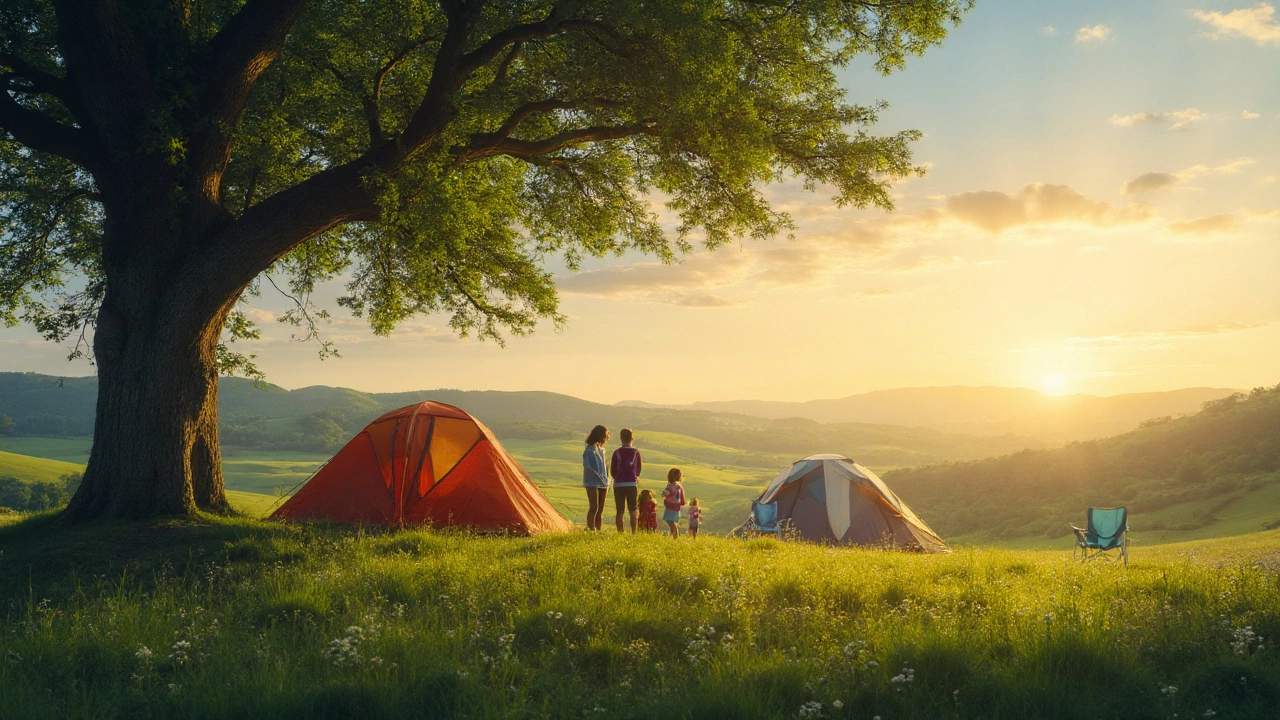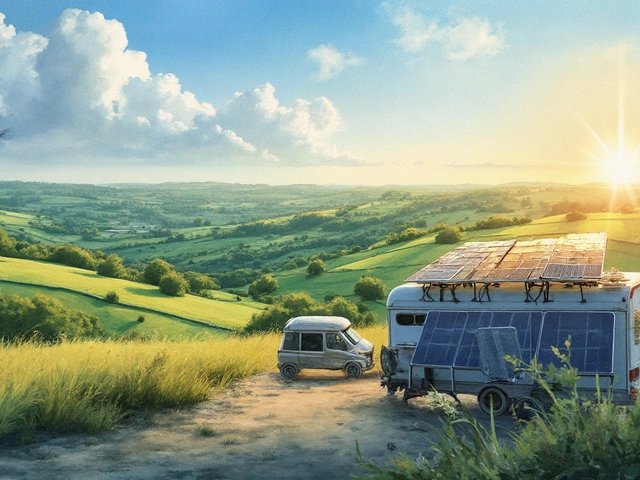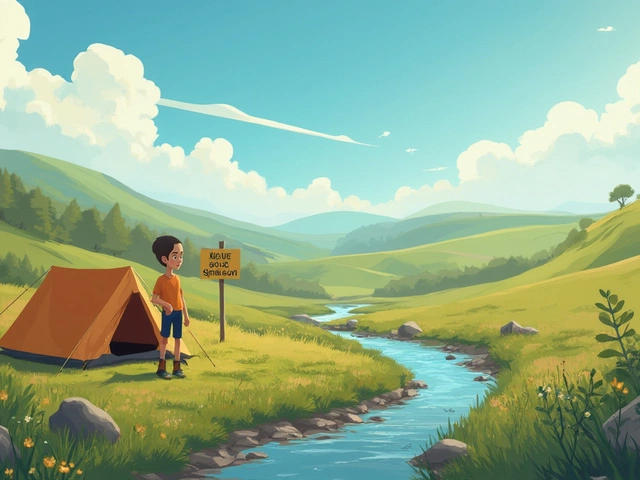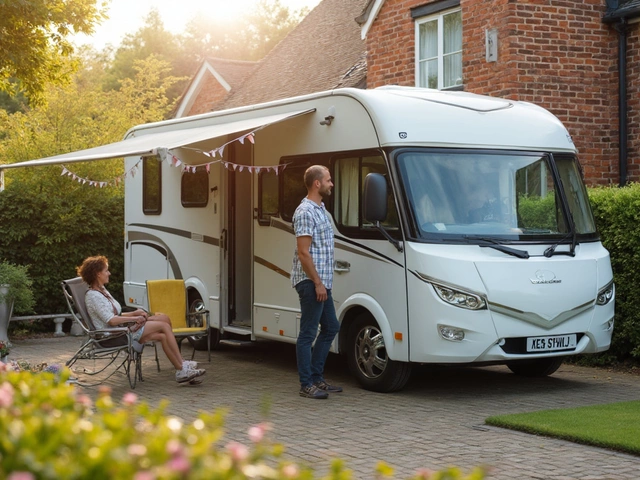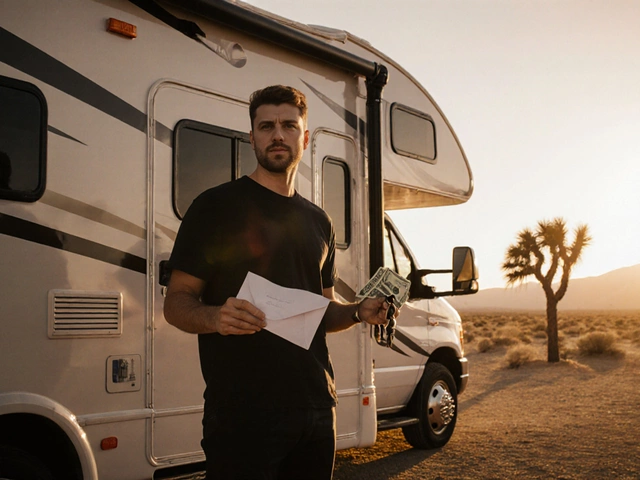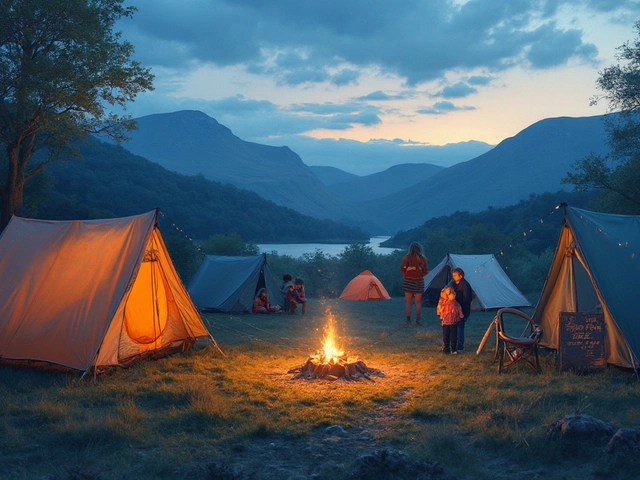Ever watched someone glide into a campsite, pitch their tent in ten minutes flat, and whip up snacks off one burner while their string lights twinkle in the trees? Feels like magic, right? Here’s the fun secret: it’s not wizardry—it’s nailing the basics, adding a dash of personal flair, and learning what works out in the wild. The difference between a miserable night and an epic tale comes down to how you set up your base. Whether your last sleepout was under your childhood bunk-bed fort or you practically have tent pegs tattooed on your forearms, pulling off a truly awesome campsite is totally within reach.
Pick the Perfect Campsite
Let’s get this out of the way first: location will make or break your trip. The golden rule? Check the ground, shade, and distance to water.
Start with flat, even ground. Sleeping on a slope guarantees you’ll be sliding toward your tent door all night. Test the spot for rocks, roots, or animal burrows—the kind of surprises you’ll regret at midnight. Next, snag some natural shade if you can. Morning sun blazing through your tent may seem cheery, until you’re sweating at dawn and your gear feels like it’s been left in a sauna.
Now, about water. Being too close to a river or lake may seem smart, but floods and bugs say otherwise. Aim for at least 200 feet (about 60 meters) from water sources. Wildlife need access too, and honest, you don’t want a thirsty deer or raccoon tripping over your stuff. Bonus points if you’re near a cool breeze or have a bit of cover for privacy—no one wants to star in their neighbor’s holiday photos when they’re brushing their teeth.
Here’s a quick table for things to check before claiming your spot:
| Factor | Why It Matters |
|---|---|
| Flat Ground | Prevents rolling, better sleep |
| No Rocks or Roots | Comfort, keeps gear intact |
| Shade | Keeps you cool, protects gear |
| 200 Feet from Water | Avoids bugs, safe from floods |
| Shelter from Wind | Reduces tent flapping, safer cooking |
| Far from Animal Paths | Reduces late-night wildlife visits |
One cool fact: In 2024, the UK’s national parks saw a 37% increase in wild camping, but most first-timers blamed poor site selection for bad experiences. Don’t join that crowd—scout carefully, take your time, and remember that the perfect spot usually isn’t the first flat patch you stumble across.
Master Your Shelter Setup
Your tent or shelter is the heart of your home away from home. Whether you’re in a trusty tent, under a tarp, or trying out a hammock for the first time, your aim is simple: stay dry, comfortable, and protected from the elements.
Start by laying down a groundsheet or footprint a bit smaller than your tent base—this keeps water from channeling under your tent during rain and protects your floor from rips. Stake the tent corners loosely, then assemble your poles and lift the tent before you tighten things up. Don’t yank the fabric as tight as drum skin; give it just enough slack for a little flex in wind.
One of the best tricks? Always orient your tent door away from the wind. It’s a small thing, but crawling out into blowing rain isn’t anyone’s idea of fun. If you’re camping in rainy areas (Scotland, anyone?), pitch with a slight slope so water drains away from your sleeping bag, not under it.
If you’re tarp camping, think of your tarp as a giant weather shield. Angle one edge low toward the wind, use guy lines, and anchor hard with rocks or extra pegs. Hammock campers, don’t forget a bug net—mosquitoes love a hanging buffet.
Pro tip for wild camping: pack a repair kit. Keep duct tape, extra pegs, and cord handy. A survey from the Camping and Caravanning Club in 2023 found that nearly 1 in 4 campers needed to fix damaged gear in the field, and those who packed spares were less likely to call it quits.
Ready for a wise nugget from the experts? As Ray Mears, the outdoor survival guru, said:
“Knowledge comes from experience. You can only learn so much from books—eventually, you have to pitch that tent and feel the wind shake it.”
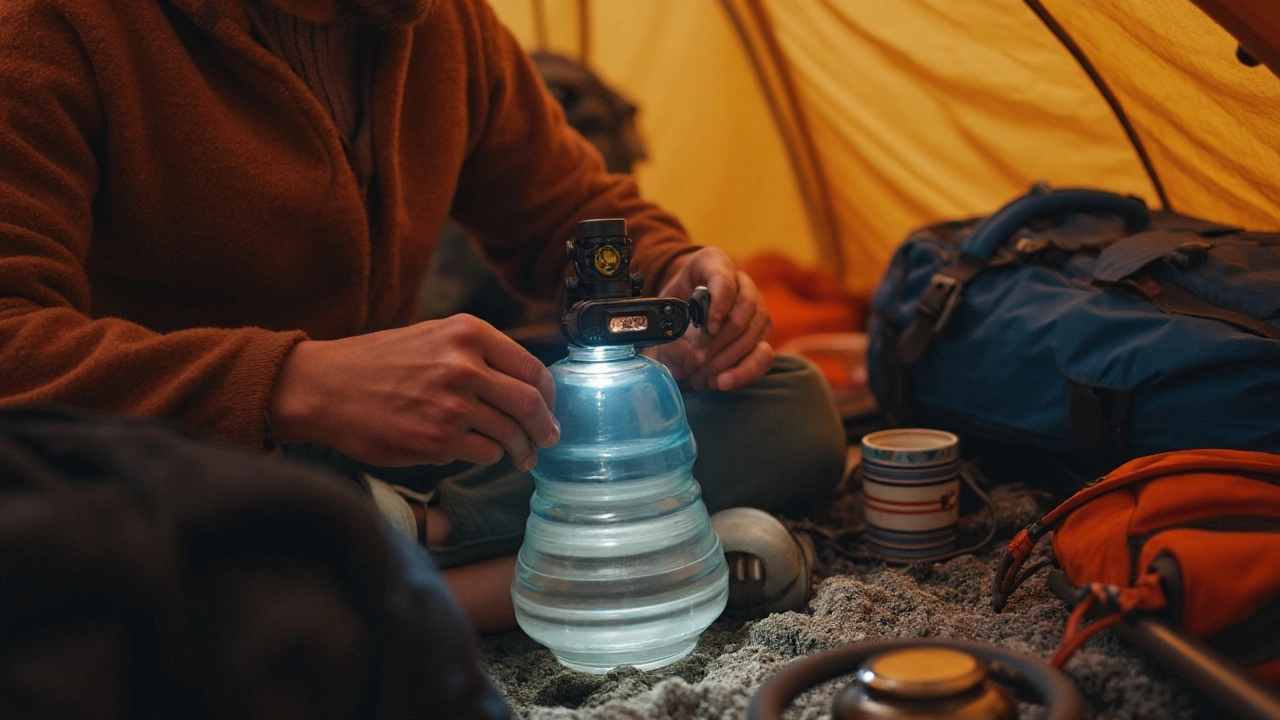
Set Up a Functional Camp Kitchen
Nothing spoils a trip like rummaging through fifteen bags for your spork while your water boils over. Your kitchen needs to be organized and safe.
First up: flat ground again, a little away from your tent (think smoke and nighttime critters). Set up your stove on a steady surface and keep fuel containers away from flames. A folding table or rock slab helps a lot. Use a tarp overhead if rain’s in the forecast, but never cook inside your tent—carbon monoxide and fires are real risks.
Here’s a kitchen hack: create three “zones.” Prep, cook, and clean. Lay out a plastic cutting board, your stove, and a washing-up bucket spaced for easy movement. Store all food in airtight containers or dry bags—foxes, birds, and squirrels will tear into those packets if they can smell them. String a food bag from a tree branch when wild camping, at least 12 feet off the ground and 6 feet out from the trunk—classic bear bag style, even if you’re just battling ponies in Wales.
Keep a stackable utensil kit and label spice jars for flavor variety. You’d be surprised how a pinch of chili powder can upgrade instant noodles. And for washing up, biodegradable soap protects water sources. A National Trust study from last year showed that soapy runoff was one of the biggest sources of damage at busy campsites. Carry water at least 200 feet from lakes or streams before dumping it, strain out food scraps, and pack them out with your trash.
Organizational tip: hang a mesh bag on a branch or line for quick-dry plates and cutlery. Trust me, fewer things left on the ground means fewer things snatched by animals in the night.
Create a Safe and Cozy Campsite Atmosphere
This is where the fun starts. You can really make the site your own, and it’s all about balancing comfort with safety. Start with lighting—string up some battery-powered LEDs, set a headlamp in a water jug for a lantern effect, or hang fairy lights at the entrance. Plus, a well-lit camp is a tripping hazard’s worst nightmare once the sun dips at 9:30 pm.
If you’re allowed a campfire, clear a ring of ground down to bare soil, surround it with rocks, and keep a bucket of water handy. Never build fires under low branches or in windy spots. A 2022 Forestry England report points out that more than half of fire incidents started near overhanging trees. When you’re done, drench the ashes cold and scatter them away from your tent. Prefer not to deal with woodsmoke? Folding fire bowls and portable pits are now legal at many sites, and they do a much tidier job. Don’t ever leave plastic or foil in the fire—it never disappears and is pure poison for wildlife.
For seating, logs and packs work in a pinch, but folding chairs or logs make a world of difference. Roll out a ground mat if it’s been wet. If you’re with friends, circle your seats for that classic campfire vibe—it makes sharing stories, snacks, or disaster tales a million times easier.
Worried about critters? LEDs and campfire don’t just keep you cozy; they keep curious animals at a distance. Just never store food in your tent. Once heard about a wild pony in Dartmoor unzipping a tent. That’s a lesson you remember.
A quick checklist for campsite coziness and safety:
- String up lights before dusk
- Keep a first-aid kit visible
- Stash shoes and gear under a tarp or inside the tent vestibule
- Layer clothes in a dry bag—mornings can chill you to the bone
- Keep water bottles and snacks within easy reach at night
- Always know where your headlamp is—it’ll save you from wrestling with a zipper in the dark

Leave No Trace and Pack Smarter
Everyone talks about leaving the place as you found it, but the real challenge is making it look like no one ever camped there at all. The “Leave No Trace” rule isn’t just good manners; it’s law in some places. Pack out every scrap—especially food packaging, orange peels, and broken tent pegs. If you’re wild camping, scatter your tent site, brush over flattened grass, and never dig trenches. Even fires, if you’re allowed them, should be erased by dawn.
To pack like a pro, lay out all your gear a day before. Go from head (hat, bug spray) to toes (socks, camp shoes), ticking off essentials. It’s amazing what you forget if you rush. Consolidate gear in clear bags or dry sacks by type—food, sleep, clean clothes—so you’re never fishing in the dark.
Fact for the gear nerds: On average, a weekend camper in the UK brings 17 separate items of kit. Most campers admit they use fewer than 10. Streamline by sticking to quality, not quantity. Choose multi-use tools, re-packaged toiletries, and leave the “just in case” extras for car glampers. Remember the old saying from seasoned scout leaders: pack weight is inversely proportional to happiness on the trail.
Here’s a sample campsite checklist to get started:
- Tent, tarp, or shelter (plus stakes and poles)
- Sleeping bag and mat
- Headlamp and extra batteries
- Stove and fuel
- Food and snacks (pre-packed, easy-prep)
- Cook pot, mug, cutlery
- First-aid kit
- Trash bags
- Map or GPS
- Basic repair kit (duct tape, spare cord)
- Warm/waterproof clothes
- Biodegradable soap, small towel
Here’s where that campsite setup magic happens. Packing and prepping leads to smooth mornings and restful nights—and the ability to help others who forgot their matches or wake up shivering at dawn. If you’ve nailed your site and left no sign behind, chances are your next adventure will be even better.
